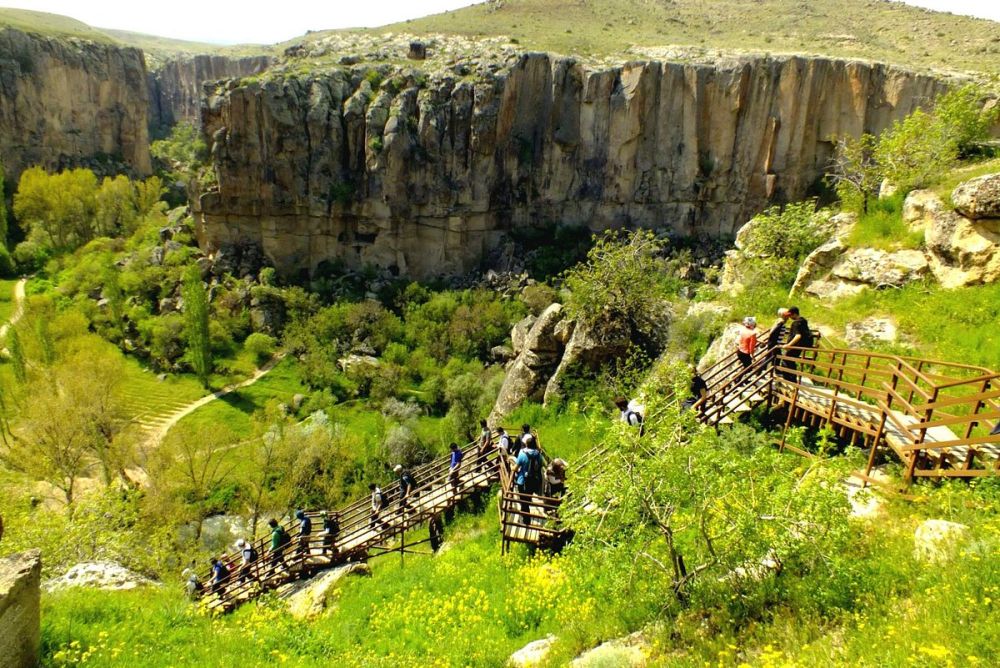

Cappadocia, a region in central Turkey known for its otherworldly landscapes, fairy chimneys, and rock formations, is steeped in a rich history and cultural heritage. Among its many intriguing destinations is the Ihlara Valley, which is renowned for its natural beauty and historical significance.
The Ihlara Valley is a gorge that extends for approximately 14 kilometers, with the Melendiz River flowing through it. The valley was formed by volcanic erosion and is dotted with rock-hewn churches and caves that date back as far as the 4th century. The early inhabitants were monks who sought refuge and isolation in the seclusion of the valley. They carved out more than a hundred churches and thousands of dwellings from the soft volcanic rock.
Tourism in Ihlara Valley began to take root in the mid-20th century when the region's historical and cultural wealth started to draw the interest of researchers and travelers alike. By the 1980s and 1990s, Cappadocia had become a well-known destination on the global stage, with Ihlara Valley being one of its must-visit locations. Visitors are drawn not only to the natural landscape but also to explore the ancient frescoes that adorn the walls of the valley's churches.
Today, Ihlara Valley continues to be a popular destination for hikers, history enthusiasts, and tourists from around the world. The valley is part of the Göreme National Park and the Rock Sites of Cappadocia, which have been designated as a UNESCO World Heritage site since 1985.
One of the latest trends in the region's tourism is the focus on eco-friendly and sustainable practices. This is to ensure that the area's natural beauty and historical sites are preserved for future generations. Tour operators and local authorities are working towards maintaining the valley by limiting the impact of tourism activities and promoting environmental awareness among visitors.
For tourists wanting to experience Ihlara Valley, a visit typically includes guided hikes through the valley, where one can explore the ancient churches and take in the serene beauty of the surroundings. The valley also offers charming tea gardens and local restaurants along the river, where visitors can rest and sample traditional Turkish cuisine.
The best time to visit Ihlara Valley is during the spring or fall, when the weather is mild and the natural scenery is at its most vibrant. Nevertheless, the valley welcomes visitors year-round, offering different seasonal perspectives of its timeless beauty.
The history of tourism in Ihlara Valley mirrors the broader growth of the industry in Cappadocia, evolving from a site of historical curiosity to a major international destination. The balance between preserving its unique landscape and accommodating the interests of global travelers continues to shape the future of tourism in this captivating region of Turkey.